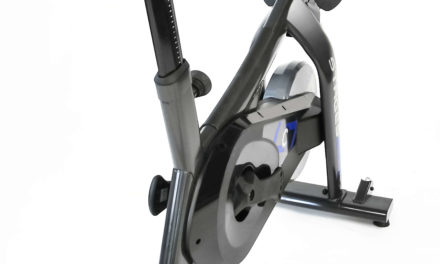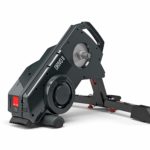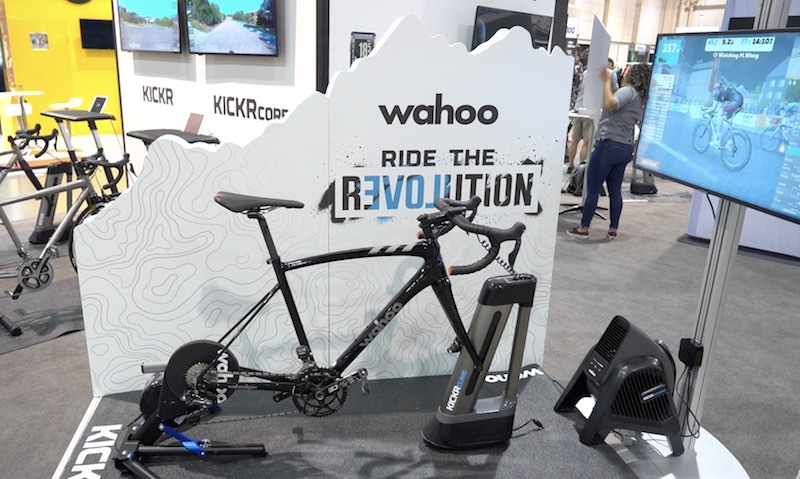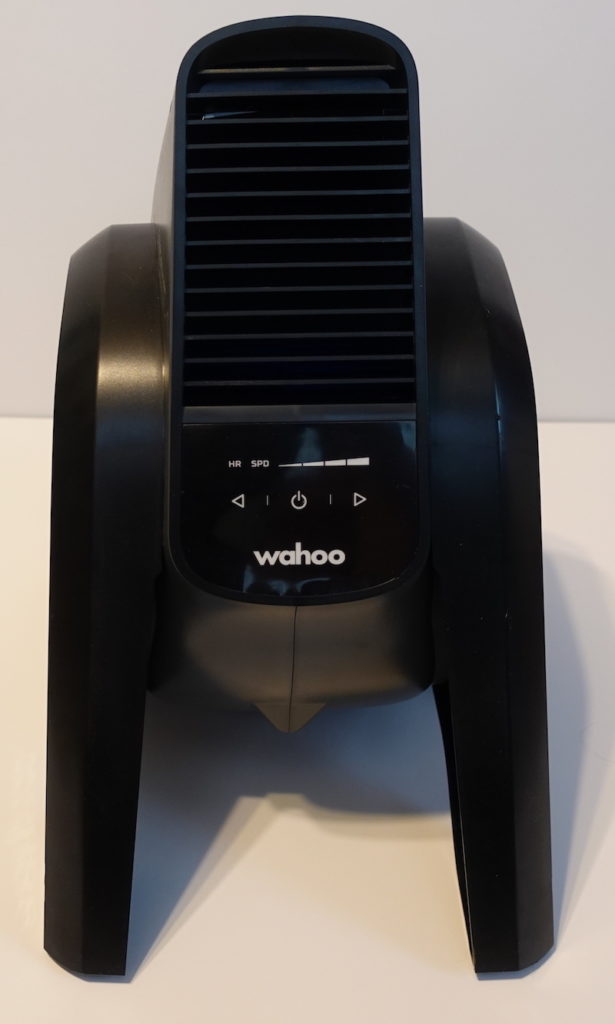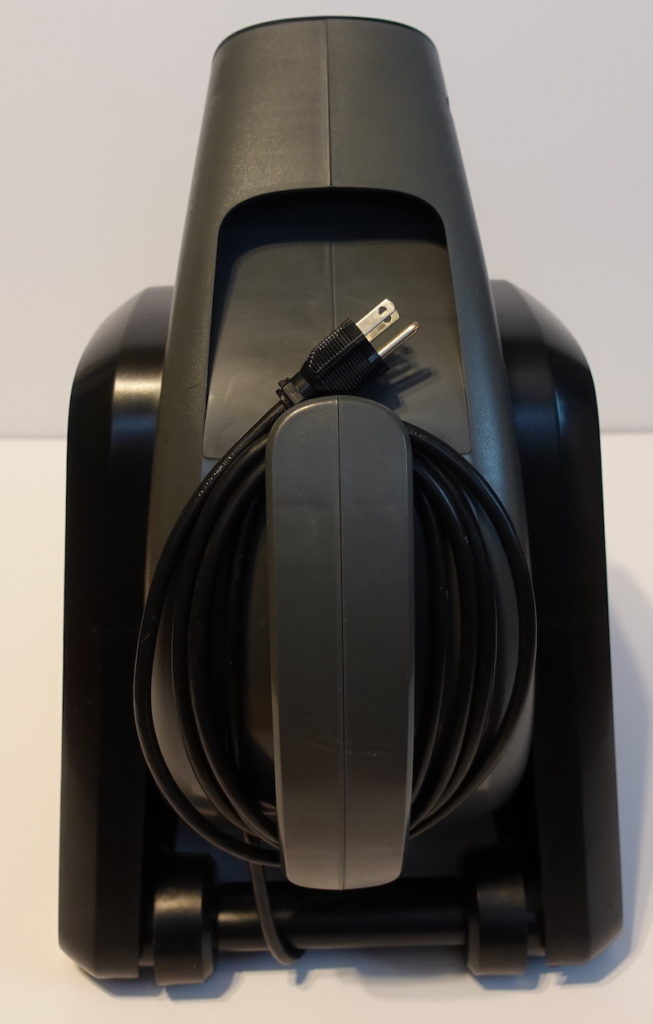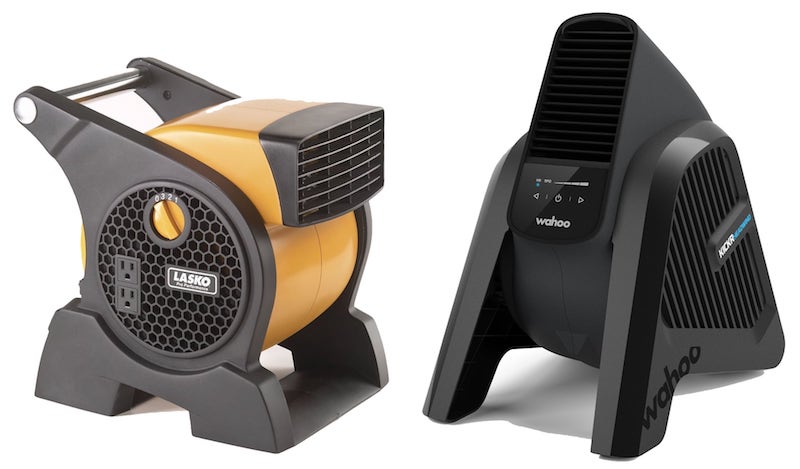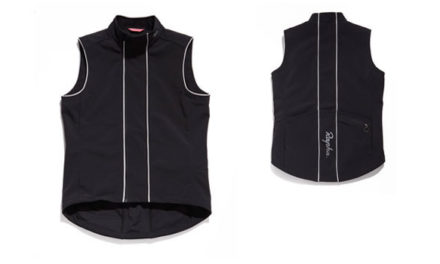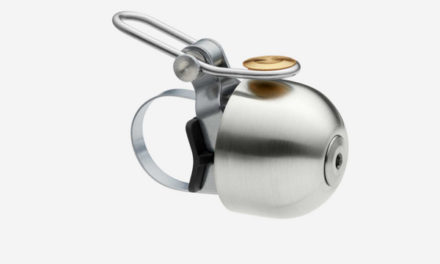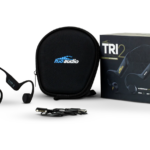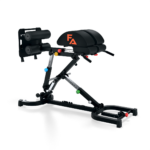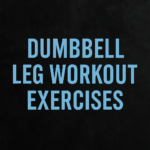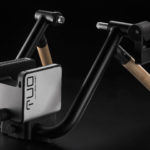
Wahoo KICKR Headwind Review

This year Wahoo announced a bunch of new products including the KICKR, KICKR Core, KICKR Climb and the Wahoo KICKR Headwind. For those that are wondering, the KICKR Headwind is designed as a smart fan and integrates seamlessly with Wahoo’s heart rate monitors and speed sensors. Wahoo’s goal is to have a lineup of products that all communicate with each other, making for one heck of an ecosystem. In fact Wahoo is the only cycling company that currently has such a vast array of products that communicate with each other.
The benefit for a rider who has all these Wahoo products is they are immersed in a more realistic riding experience. Now of course nothing is going to be as realistic as riding outdoors, but Wahoo certainly is making an attempt to replicate it and thanks to programs like Zwift, they are getting pretty close.
Wahoo KICKR Headwind Unboxing
We received our Wahoo Headwind right after Interbike, actually it was waiting for us when we got back. When unboxing the KICKR Headwind fan, there wasn’t much to unbox. Wahoo included an instruction manual and the Headwind unit. That was it.
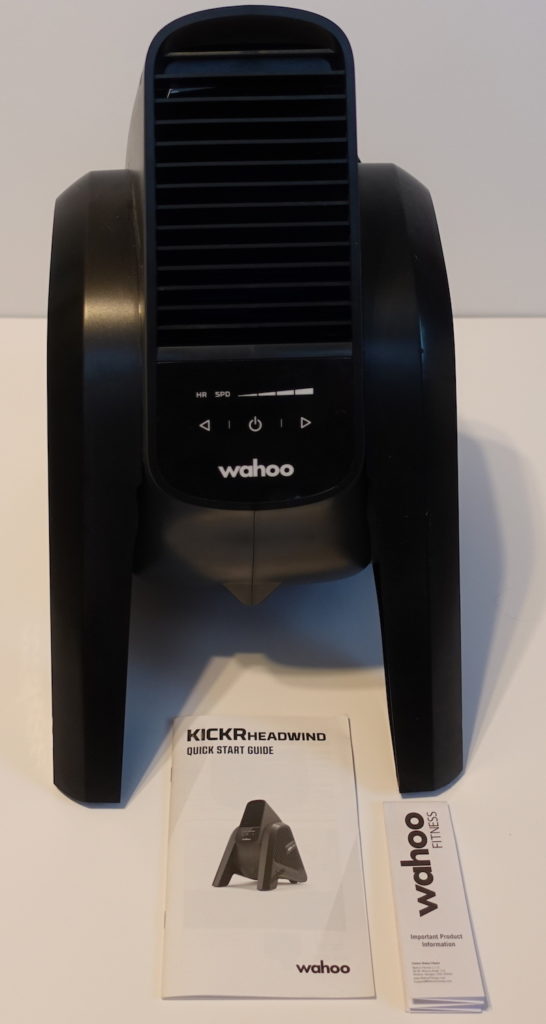
Wahoo KICKR Headwind Unboxing comes with the KICKR Headwind Plus a Quick Start Guide and Limited warranty
Wahoo KICKR Headwind REVIEW
The KICKR Headwind is an intelligently controlled fan that uses 1 of 4 methods to adjust fan speed including
- Heart Rate (Using A Heart Rate Monitor)
- Speed (Using A Speed Sensor)
- Manual Control (Using The Wahoo Fitness IOS Application)
- Manual Control (Using The Fan’s buttons)
👍Communication to the Headwind fan is done via Ant+ or Bluetooth, which adjusts the fan’s wind output as well as receives firmware updates.
If you’re using the Headwind in manual mode, you can adjust the fan speed on the front of the fan using the arrow buttons from 25% to 100% in 25% increments. If you want a little more flexibility on wind speed, you can also use the Wahoo Fitness app and use the slider to set the fan speed from 0% to 100% for more precise settings.
The KICKR Headwind has a set of legs that can be positioned out for use with the KICKR Desk or in. The fan also has plastic wheels that roll, although I would have liked to see a more robust set, something that are typically used on today’s suitcases and travel bags.
👎I thought the plastic wheels Wahoo uses made the fan seem a little cheap.
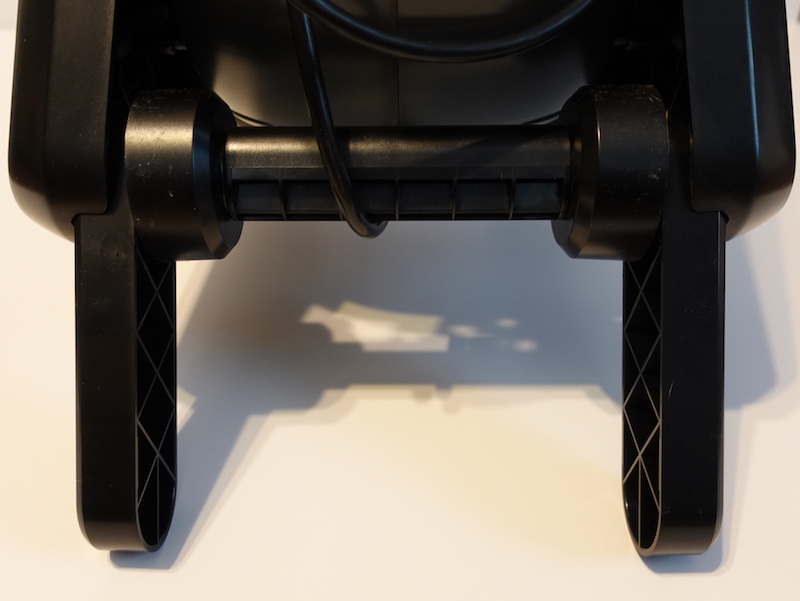
KICKR Headwind Legs can fold out or in.
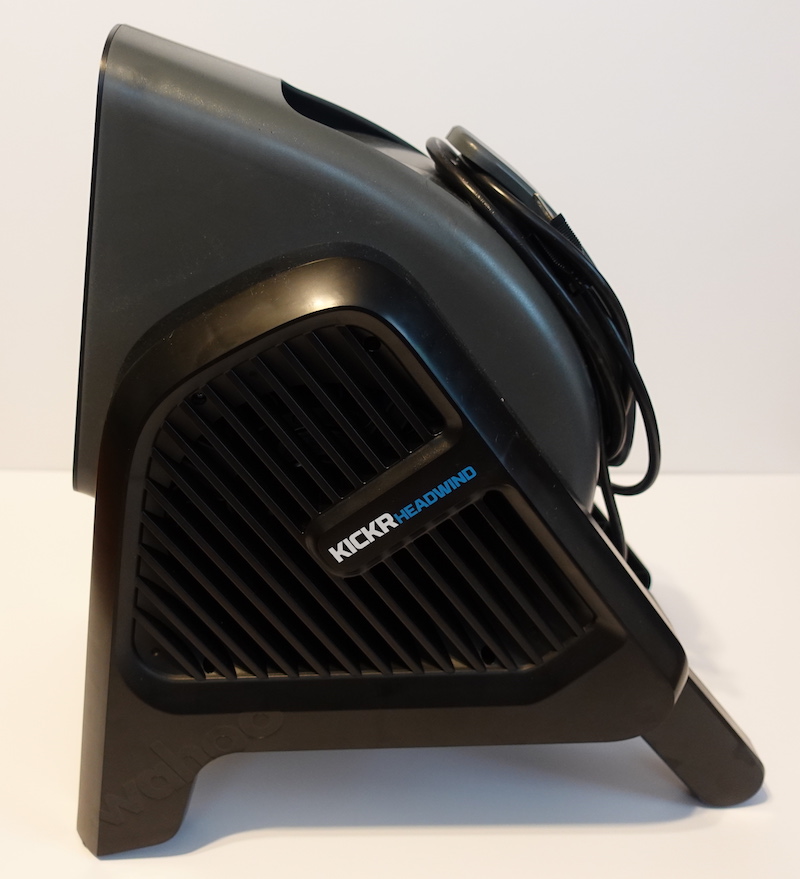
The Wahoo KICKR Headwind comes with side air intake vents
The KICKR Headwind does require power and the power cord wraps around the back of the fan.
👉 While the rear electric cord holder works well, it would have been nice for the plug to have a cord notch in it for holding the cord when not in use.
👍 Wahoo claims the Headwind can blow up to 30mph on high, which you can certainly feel. Speaking of airflow, the unique pattern of wind that comes from the Headwind is designed to mirror a cyclists body, which is almost entirely from the front quadrant.
Wahoo KICKR Headwind Targeted Airflow Pattern
The KICKR Headwind was design specifically to mimic the frontal airflow pattern that would typically be encountered on the road. In essence it matches the shape and position of a cyclist’s body while riding on a bicycle.
👉 While in theory this sounds reasonable, I found that if I had a towel on my handlebars, some of the wind gets blocked and reduces the overall cooling effect. For those who sweat a lot, it is almost a requirement to have a towel or two on the bars. Having a fan that is offset can help eliminate some of the blocked wind, but then that sort of defeats the purpose of the air flow pattern.
Wahoo KICKR Headwind Competition
In doing a bit of research I found there really isn’t any direct competition to the Headwind that communicates via bluetooth and allows you to adjust fan speed based on speed or heart rate. The closest fan that looks like it would compete on manual mode is the Lasko Pro Performance Blower Fan.
While I haven’t used the Lasko fan, many riders claim it to be pretty good and it cost significantly less (roughly $69 vs $250) .
Wahoo KICKR Headwind Product Specifications
The main features of the KICKR Headwind include:
- Powerful Airflow – With wind speeds topping out at over 30 mph the KICKR HEADWIND will keep you cool during your hardest efforts.
- Rider optimized – The Targeted Airflow Pattern of the KICKR HEADWIND is designed to mirror the shape and position of a cyclist’s body while riding on a bicycle.
- Sensor-based control – Control the speed of your KICKR HEADWIND by pairing your ANT+ speed sensor, heart rate monitor, or smart trainer directly to the fan. As your speed or heart rate increases so will the fan speed.
- 4 Manual Speeds – Control the KICKR HEADWIND with a simple press of a button. Four (4) preprogrammed fan speeds allow you to select your ideal airflow.
- App Controlled – Use the Wahoo Fitness Application for easy fan speed control at your fingertips.
- KICKR DESK Compatible – The KICKR HEADWIND was specially designed to fit with the KICKR DESK. The wheels on the KICKR HEADWIND allow you to roll the fan into position when it is attached to your KICKR DESK.
Specifications:
Wahoo KICKR Headwind Specifications.
- Top Fan Speed: 30 mph/48 kph max fan speed
- Connection: Ant+ and Bluetooth connectivity
- Adjustability: Legs can be positions in 1 of 2 ways
- Motor: 120v 60hz
- Weight: 12lbs
- Retail: $250
Overall I think the Wahoo Fitness KICKR Headwind works as promised and delivers a good amount of wind. The real question is will people be willing to pay the $250 price tag for a fan that realistically can be match by less expensive options.
What gives the Headwind some Kudos is the ability to adjust wind speed based on your heart rate and bike speed. Realistically though I found that I used the manual control option more than the HR or speed options, which again begs the question, are people going to use those options and if not is the Headwind worth it.
An issue I ran into pertained to my towel being on my handlebars. The towel placement prevented and actually blocked some of the wind coming from the fan. Since I am a heavy sweater, it’s all but necessary to use a towel. That said, when standing up I did find the focused airflow extremely helpful.
- Speed Control : I found that when climbing as your speed drops, less wind is put out, but normally I get hotter when I climb, so I would want more wind, not less.
- Heart Rate Control: Heart rate control works well with the Headwind.
- Manual Control: I found the Wahoo Fitness Application manual control to work great and I had zero issues.
What I would like to see added to the Headwind
Here are a few of items I would love to see added in future product updates or firmware updates.
- Ability To Cool The Air: I think if the Headwind also had the ability to cool the air and not just blow air, that would be amazing. Obviously this would require a total redesign and probably jack up the price significantly.
- Ability To Adjust Airflow based on Watts: I think this should be an easy update where the fan could blow based on watts rather than just speed. For example I could be pushing up a 8% grade at 300 watts, but only be at 8mph or something like that. Currently if you have the speed set, the fan might be at the lowest setting.
- Ability To Adjust Airflow based on Grade: It would be cool to adjust airflow based on grade, so like above as the grade increases the wind would increase.
- Extra Outlets: When comparing the Headwind to the Lasko fan, the Lasko fan has 2 optional 120-volt accessory outlets for power. Seems like a rather cool idea and something that Wahoo could implement.
To find out more about the Wahoo Headwind, check out Wahoo Fitness (https://www.wahoofitness.com/)


